Lunch often wins the title of 'boring meal,' especially when it's reduced to just a mundane sandwich between meetings or in the midst of a hectic day. But who says lunch has to be stuck between slices of bread? There's a whole culinary world waiting to be explored, filled with vibrant flavors and textures that satisfy both the palate and the appetite.
Think about salads, for instance. Gone are the days of plain lettuce and cucumber. Today’s salads are colorful masterpieces, brimming with seasonal veggies, proteins, and interesting dressings. Or consider grain bowls, a combination of wholesome grains like quinoa or farro topped with everything from roasted vegetables to chunks of grilled salmon, offering a filling yet healthy option.
If you’re craving something handheld, wraps can be your best friend. They offer the convenience of a sandwich but with the room to pack in global flavors, from Mediterranean falafel wraps to spicy tuna rolls. For those who love a surprise at lunch, bento boxes deliver an engaging meal with small, different bites, perfect for keeping lunch exciting and balanced.
And not forgetting soup lovers, a warming bowl of soup can be the hug you need in the middle of a stressful day. The best part? Most of these options can be prepared in advance, perfect for when you're short on time. Embrace the potential of leftovers, with a bit of creativity, yesterday's dinner transforms into today's lunch masterpiece.
So, next time you're reaching for the bread, remind yourself of all the culinary options waiting for you. It might just redefine what lunchtime means to you.
- Salads with a Twist
- Creative Grain Bowls
- Wraps: Beyond the Basics
- Delightful Bento Boxes
- Warm and Hearty Soups
- Leftovers with a New Life
Salads with a Twist
Salads have taken on a new identity in recent years, evolving from uninspiring sides to stand-out, hearty meals that are perfect for those seeking healthy lunch ideas without the sandwich. The beauty of salads lies in their versatility, where creativity runs wild, and no two bowls need to be the same. When we talk about salads with a twist, it's about embracing bold flavors and textures that dance together in every bite. Think of a classic Greek salad, but elevate it with a sprinkle of za'atar or swap feta for halloumi before grilling. The possibilities are boundless, and all it takes is a desire to experiment with ingredients both familiar and new.
Incorporating grains is a growing trend that you're likely to come across in modern salad mixes. Quinoa, farro, and barley not only add heartiness but also deliver a satisfying texture and a boost of nutrients. These non-sandwich meals effortlessly combine health and fullness. Consider spicing them up with roasted root vegetables like sweet potatoes or beets that bring earthiness and a splash of color. The dressing can be a real game-changer; something as simple as a lemon-tahini dressing can bring an entirely new dimension to a salad, making it genuinely irresistible. The goal is to play with contrast—cold and hot, tangy and sweet, fresh and roasted, soft and crunchy.
One cannot ignore the trend of incorporating unexpected elements in salads as well. Fresh fruits like pomegranates, mango, or even thinly sliced apples add a surprising sweetness that can complement salty and creamy notes. Cheese varieties beyond the typical options, such as burrata or gorgonzola, can transform an everyday salad into a gourmet masterpiece. Nuts and seeds, from toasted pine nuts to pumpkin seeds, not only contribute a crunch but are also filled with healthy fats, making the salad a well-rounded lunch alternative.
For those who love to have a bit of protein with their lunch, salads are an excellent canvas for showcasing marinated meats or plant-based proteins. Grilled chicken with a spicy rub, seared tofu with a hint of soy, or even chickpea patties can sit gloriously atop your greens and grains. This flexibility ensures that each salad not only satisfies but also keeps you full and nourished throughout the afternoon. It's about taking your lunch from routine to remarkable.
According to Jamie Oliver, "A good salad can be everything: crisp, juicy, tender, sweet, sour, bitter, and salty. It should not be complicated or contrived, just a good example of the best of what each season has to offer."Dive into your local farmer's market for inspiration, selecting what looks and feels fresh, and letting the seasons guide your culinary creations. Many restaurants today are ahead of the curve, offering daring salad combinations that inspire diners to think differently when crafting their meals at home.
For those concerned about nutrient intake, salads offer a high nutritional value with lower calorie content when compared to traditional options. A noteworthy fact is the incorporation of varied colors across fresh produce, which not only makes salads visually appealing but ensures that a variety of vitamins and minerals are present. For instance, dark leafy greens such as kale or spinach provide iron and calcium, while red peppers and tomatoes are rich in vitamin C.
If you're someone who's not fully convinced that a salad can substitute the heft of a sandwich at lunch, try adding a component of warmth to it. Roasted vegetables, warm grains, or freshly cooked proteins can bridge the gap, offering all the comfort of a hot meal with the benefits of fresh produce. Perhaps a warm salad base with a chilled dressing could be the new lunch revolution we didn't know we needed—simple yet surprisingly delightful.
Creative Grain Bowls
When you think of quick, healthy lunch alternatives, creative grain bowls should definitely make the list. These versatile dishes have become a staple in kitchens worldwide, combining convenience with nutrition in a single bowl. The beauty of grain bowls lies in their simplicity and adaptability, often beginning with a hearty base of grains such as quinoa, farro, or brown rice. What’s amazing about these bowls is their capacity to tick all the nutrient boxes, offering a balanced meal that is both filling and satisfying.
The beauty of a well-crafted grain bowl is its balance. Start with a base of grains that suit your taste—each bringing its own texture and flavor. Quinoa, known for being a complete protein, can be a base, offering a fluffy texture. Alternatively, farro delivers a chewy mouthfeel, rich in fiber and low in calories. Your grain choice doesn’t end there; consider bulgur, barley, or even wild rice for varied textures. Non-sandwich meals like grain bowls engage creativity while feeding you wholesomely at any time of the day.
To make your grain bowl a star player in your meal rotation, proteins are key. They can range from grilled chicken to plant-based edamame or baked beans. These elements fulfill the protein requirement while adding depth to the flavors. And don’t forget the magic of toppings—curating the perfect mix of roasted veggies, nuts, and seeds can elevate your bowl to another level. For instance, roasted sweet potatoes add sweetness, while a sprinkle of pumpkin seeds contributes crunch to each bite. If you’re in a hurry, keep diced tomatoes, avocados, or even some fresh herbs handy to throw in which instantly refresh the entire meal.
According to culinary experts, "A grain bowl is only as good as its dressing," reminding us not to overlook this final touch. A flavorful dressing can unify all the different elements, bringing them together harmoniously. Try a classic olive oil and lemon vinaigrette, or perhaps a tahini-based sauce for a creamy touch without dairy. This addition ensures every spoonful is as delightful and coherent as the last. What's surprising is how these components combine to form a quick lunch idea that rivals any packed sandwich in taste and nutritional content.
Statistics show that people who switch to grain bowls for their regular lunches report feeling more energized throughout the day. Below is an illustrative table that showcases the potential caloric range and protein content based on common grain bowl ingredients:
| Ingredient | Calories | Protein (g) |
|---|---|---|
| Quinoa (1 cup cooked) | 222 | 8 |
| Grilled Chicken (100g) | 165 | 31 |
| Avocado (1/2 medium) | 120 | 2 |
| Chickpeas (1/2 cup cooked) | 134 | 7 |
Embrace the realm of grain bowls the next time you're pondering a healthy lunch idea. Allow your culinary instincts to navigate the endless combinations, ensuring that each bowl is as unique as your daily mood. Grain bowls not only break the mold of typical lunch choices but they also bring an element of play into your meal prep, turning a regular lunch into a joyful, creative endeavor every single time.
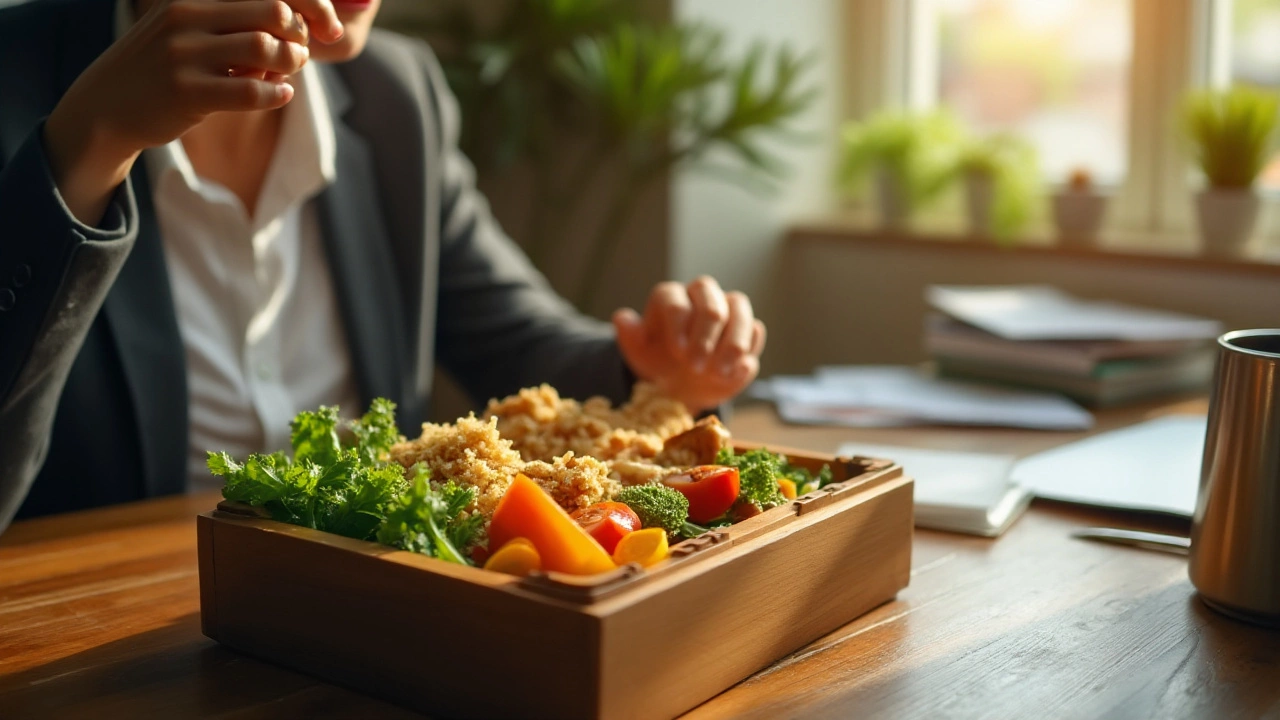
Wraps: Beyond the Basics
When we talk about wraps, the traditional image might be that of a simple tortilla filled with a few standard ingredients. Yet, the world of wraps is a vast landscape, waiting for bold culinary adventurers to explore! These delightful alternatives to the typical sandwiches embody versatility and allow for a fusion of global flavors to be tucked neatly into a soft shell. Think beyond the plain, and enter a realm of exciting possibilities where health, taste, and conveniency unite.
The magic of wraps lies in their ability to encompass diverse ingredients, offering a chance to experiment with textures and tastes. Consider a spin on the classic by using whole grain or spinach tortillas, or for those going gluten-free, there are rice paper or even seaweed wraps. Now, let's fill them up with something vibrant. Blended lentils mashed with spices and herbs can mimic a classic falafel, providing a plant-based punch of protein. Add to this a spread of silky hummus, crisp cucumber slices, and tart pickles, and you've got a wrap that's both nourishing and delicious.
International Inspirations
Wraps provide the perfect vehicle to enjoy international cuisines in a grab-and-go style. Ever tried a Japanese-inspired wrap? Fill a nori sheet with seasoned sushi rice, slices of fresh avocado, and seared salmon or tofu for a nod to sushi flavors with minimal fuss. Or, how about a Mexican twist? Use a corn tortilla filled with grilled chicken, black beans, and fresh pico de gallo. Top with a dollop of sour cream or guacamole for an irresistible taste adventure. Healthy lunch ideas have never tasted so good!
"A wrap can be like an artist’s blank canvas—humble and unassuming until you choose to fill it with your vibrant, personal expression. It's your taste preferences wrapped in your own flair!" - Culinary Inspiration Magazine
In the spirit of staying prepared, wraps are excellent candidates for meal prep. Construct a week's worth of lunches by preparing different fillings and storing them separately. In the morning, simply wrap up your chosen combination for a quick quick lunches without a hitch. The possibilities here are endless—sometimes it's all about what you already have in your fridge. Leftover roasted vegetables, bits of cheese, and small amounts of sauces can breathe new life when neatly wrapped.
Nutritional benefits are a strong suit of wraps as well, offering layered meals that can include everything from proteins to fibers effortlessly. An example of a healthy wrap concoction might include a fiber-rich base such as quinoa, accompanied by slices of lean turkey, fresh cherry tomatoes, and a handful of leafy greens. Yes, wraps can indeed be an answer to those searching for healthier lunch options.
It's time to redefine the midday meal. Next time hunger strikes, step beyond the expected sandwich and elevate your lunchtime with a wrap that tells a story of taste, texture, and tradition. What’s your wrap style going to be today? The journey is as simple as a fold, filling, and the enjoyable anticipation of the first bite.
Delightful Bento Boxes
When it comes to lunchtime innovation, few things captivate both the eye and the palate like bento boxes. Originating from Japan, these cleverly compartmentalized meals offer an aesthetic harmony of color, taste, and nutrition, leaving standard lunches trailing in their wake. Each section of the box presents a different taste and texture, ensuring every bite is an adventure. The beauty of a bento box is its flexibility, allowing you to incorporate ingredients that cater to dietary needs or personal preferences—be it vegan, gluten-free, or packed with protein.
The concept of a bento box is not only about packing food but also about ensuring variety and balance in the meal. Traditionally, a Japanese bento box includes rice, a protein (such as chicken or fish), vegetables, and some type of pickled side. But the western take on bento has expanded into numerous variations and themes, sometimes reflecting traditional Japanese elements and other times embracing flavors from around the globe. Often highlighting seasonal ingredients, the bento becomes not only a meal but a reflection of what's fresh and available.
Preparing a bento box may seem daunting at first, but with a little planning, it becomes an enjoyable routine. Start by choosing your base—rice, grains, or noodles often form the foundation. From there, add a protein; grilled chicken, hard-boiled eggs, tofu, or legumes are all excellent choices. Vegetables should come next, and they can be raw, cooked, or pickled, adding both texture and flavor. Don't forget to include small portions of fruits or healthy snacks for a sweet finishing touch. A good bento is as much about balance as it is about taste.
"A bento box combines convenience and diversity, pleasing both the appetite and the senses," shares Harumi Kurihara, a celebrated Japanese cooking expert. "It's a meal that tells a story, reflecting the care and skill of the person who prepared it."
Many aficionados recommend using bento as an opportunity to exercise creativity, trying new culinary pairings or presenting the food in an artistic manner. Whether you're crafting a traditional meal with fish and rice or a modern vegan delight, the possibilities are only limited by your imagination. Investing in a good quality bento box can also make a significant difference. Choose one with snug compartments to maintain food separation and freshness, keeping your lunch as appealing at noon as it was when packed in the morning.
Incorporating delightful bento boxes into your lifestyle can transform the way you approach meals. They invite experimentation, care, and thoughtful planning, and the results are a feast not just for the body but also for the senses. Bentos do not merely serve as a solution to the lackluster lunch but celebrate the midday meal as an occasion to slow down, relish, and appreciate the art of eating.
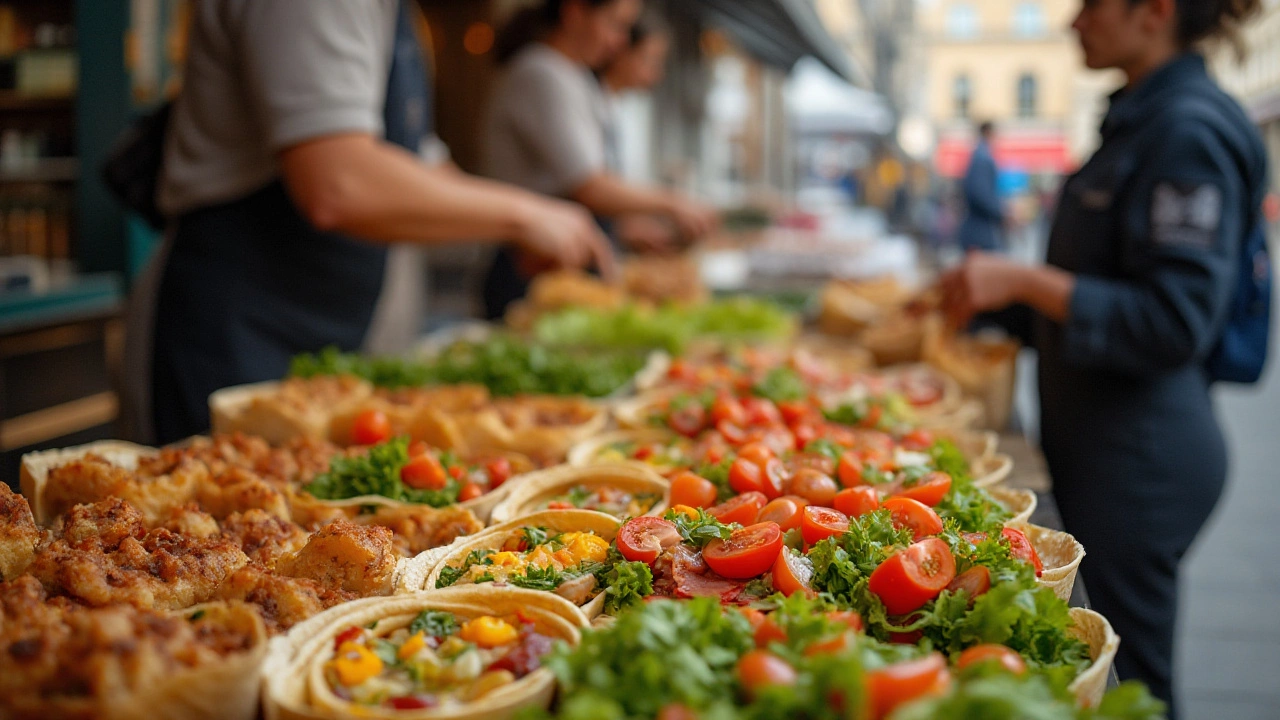
Warm and Hearty Soups
There's something magically comforting about a warm bowl of soup, especially during those cooler days when you crave something nourishing to soothe the soul. Soups have this unique ability to combine various ingredients into one harmonious masterpiece that warms you from the inside out. The beauty of a homemade soup is its versatility; you can delve into countless combinations, starting from humble vegetables to more elaborate concoctions featuring meats or seafood. Each recipe invites you to experiment with flavors and textures, making it a delightful adventure for the taste buds.
When preparing soup, it's essential to think about the depth of flavor. Creating a rich, flavorful broth is often the secret to elevating a soup from good to great. A tip is to simmer bones and aromatics for several hours to extract every bit of flavor, a technique treasured by many seasoned cooks. If you're short on time, though, don't worry—there are quick tricks too, like adding herbs and spices strategically to enhance the flavors in a shorter time. You can always rely on a well-cooked onion, garlic, and celery base to kickstart your soup with a solid foundation.
For those seeking healthy lunch ideas, soups are a nutrition powerhouse. Take the classic minestrone, loaded with fiber-rich beans and vibrant vegetables, it’s a colorful bowl of vitality. Or consider the immune-boosting properties of a garlic soup, known in many cultures for its potential benefits against colds and flu. According to a 2012 study published in Current Pharmaceutical Design, certain bioactive compounds in garlic show promise in their antimicrobial properties, offering more than just flavor. Though not a substitute for medicine, a warm garlic soup on a cold day might just be the comfort you need.
Spicing It Up
Adding spices to your soup can be a simple way of transforming its flavor profile entirely, and it's a trick often used in international cuisines. Embrace the kick of a chili in a Mexican tortilla soup or the warming effect of ginger in an Asian-inspired noodle broth. These spices not only bring a depth of flavor but can also enhance the nutritional aspect of your meal. Take turmeric, for instance, praised for its anti-inflammatory properties—a sprinkle in your soup not only adds color but also a health boost. British nutritionist Rhiannon Lambert notes, "Spices are not just a seasoning; they're a gateway to health benefits."Soups are also a fantastic way to embrace the art of making leftovers special. A roast chicken from last night's dinner can find a second life as a savory chicken noodle soup, and those odds and ends of vegetables hanging out in your fridge can become the stars of a hearty vegetable soup. Plus, soups are often more flavorful the next day, making them ideal for meal prep. You can prepare a big batch on Sunday and enjoy a quick lunch throughout the week, saving you time and effort while ensuring you have delicious, homemade meals at your fingertips.
Embracing Seasonal Produce
One of the secrets to a great soup is to work with seasonal produce. Not only does this enhance the flavor, since seasonal ingredients tend to be fresher and tastier, but it can also be more economical. In autumn, think squash and pumpkin soups, bringing a sweet, earthy flavor. In the spring, embrace greens like asparagus and spinach, with a hint of lemon for freshness. Ultimately, making soup is not just about filling a bowl; it's about bringing together ingredients that complement each other and nourish both body and spirit.Leftovers with a New Life
It's a common scenario: opening the fridge to see dishes from last night still sitting there, perhaps looking a bit forlorn and unappetizing. But let's change the way we view leftovers. Rather than seeing them as remnants of meals gone by, think of them as the building blocks for lunches that are not only easy but also full of flavor and creativity. Many around the world, from seasoned chefs to busy home cooks, have mastered the art of transforming leftovers into mesmerizing meals.
Begin by reevaluating the versatility of what's left. For example, roast chicken from dinner can easily become the star of a new dish. Shred it up and toss it with some greens and a vibrant vinaigrette for a salad that pairs perfectly with a lunchtime schedule. Or incorporate it into a quick lunch idea by crafting a hearty chicken quesadilla—a bit of cheese, maybe some beans, and you’re good to go. And if you're wondering about boring rice, think again. It can morph into a fried rice medley with a sprinkle of soy sauce and some veggies you have on hand, saving both time and reducing waste.
Vegetables, too, can find a new purpose. Those roasted veggies from last evening can be stirred into an omelet or a frittata, making for a filling and robust midday meal. There’s also the chance to play with flavors by adding spices and herbs that might've been neglected in your cupboard. Food writer Tamar Adler once said, "Great meals rarely start from scratch," reminding us of how valuable and convenient leftovers can be—especially when time seems scarce.
If you're someone who likes to plan, consider setting aside a portion of your dinner as you're cooking, with a mind to reinvent it come lunchtime. This forward-thinking approach is especially useful when you’re in a rush but still want something nutritious and delicious. And don’t fear repetition. Just because you enjoyed it yesterday doesn't mean it should be banished for a week. Jazz it up with a fresh side or a new sauce, giving it a renewed zest.
You can use leftovers to not only create non-sandwich meals but also cut down on food waste, a notable issue that plagues households globally. In the UK alone, stats reveal that millions of tonnes of food end up in landfills each year. Rescuing these meals from the brink gives them—and you—a new lease on life. To track how often you’re wasting or reinviting leftovers, keep a small kitchen diary. It’s surprising how small habits can make significant differences over time.
Remember, the secret to turning yesterday’s feast into today’s tasty lunch doesn't always require elaborate recipes or copious ingredients. Harness your creativity and make these meals appealing once more. Leftovers, when treated with respect and an eye for reinvention, breathe new life into lunchtime, proving they’re not just about repeating but evolving.
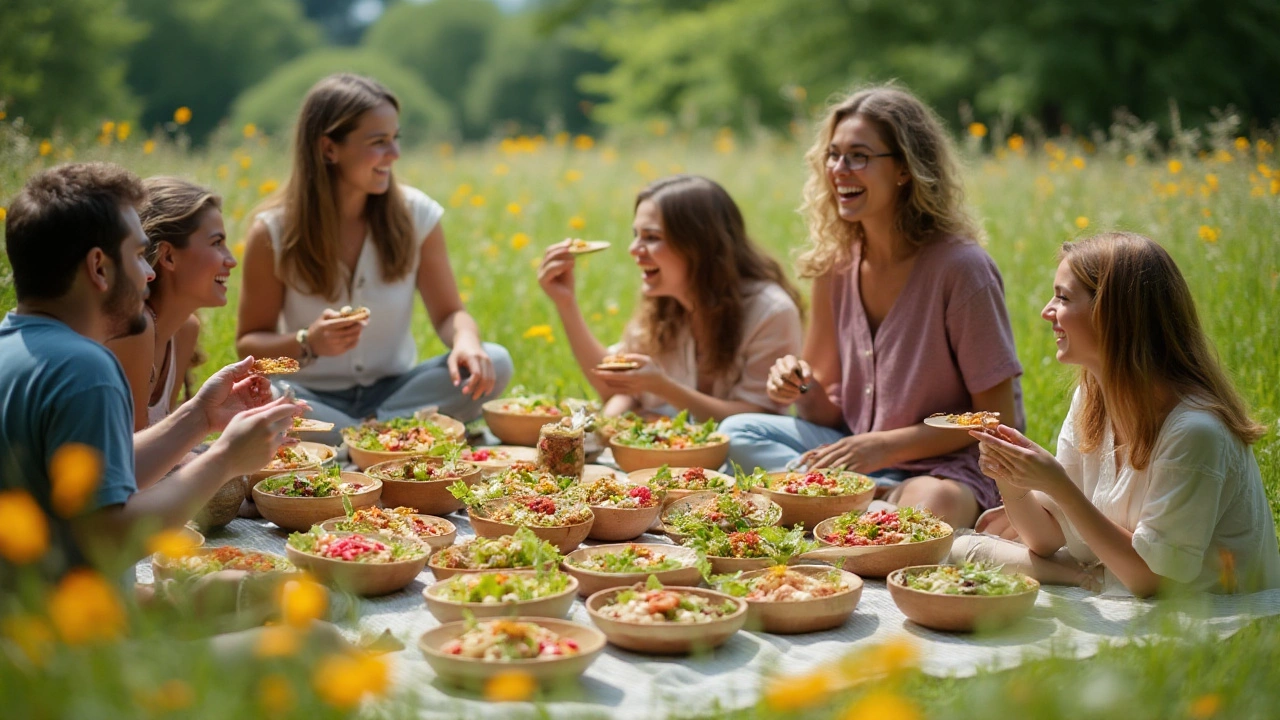

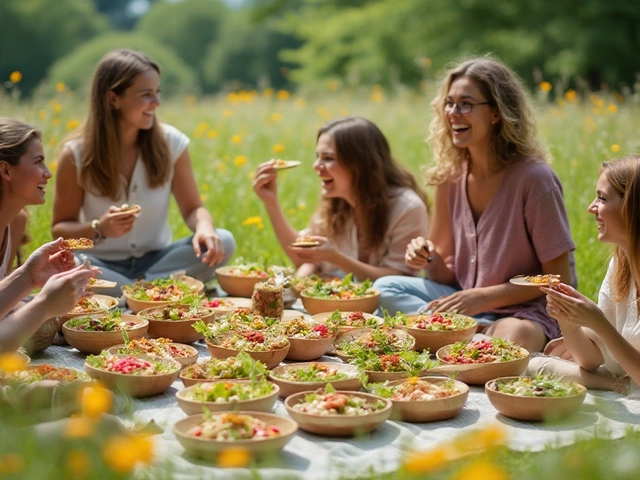
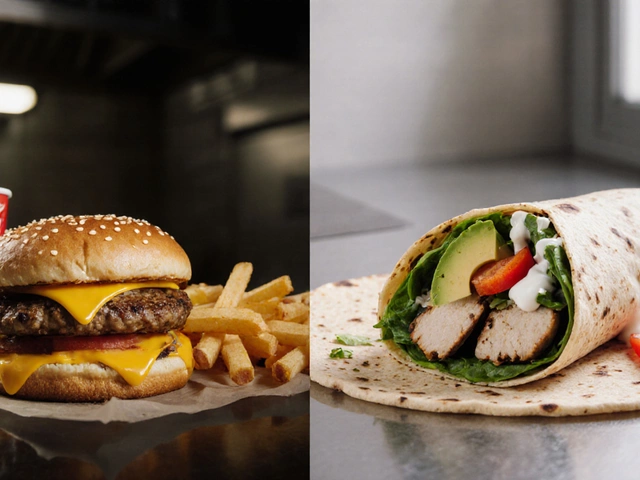
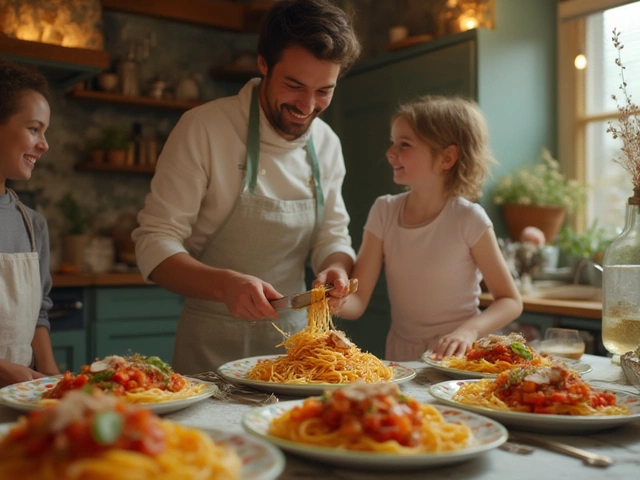


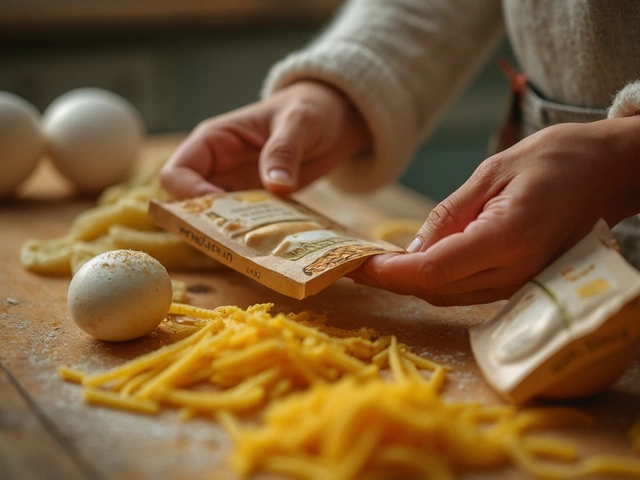

Write a comment